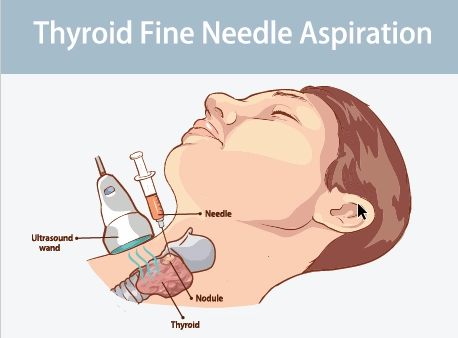Consider crucial guidelines for biopsies with more than one lesion.
Fine needle aspiration (FNA) biopsies of the thyroid might throw you for a loop due to the lack of frequency with which you encounter the procedure. That’s why it can never hurt to boost your FNA coding acumen with a few helpful tips and pointers.
A safe place to begin is by outlining which portions of the operative report to prioritize among all others. When coding a thyroid FNA biopsy, you want to home in on two important features of the surgery: imaging guidance and the number of lesions.
Work your way through some surgical scenarios and accompanying guidelines to round out your knowledge on coding thyroid FNAs.
Choose From a Selection of Primary, Add-on Codes
Example: The surgeon performs an FNA of a right thyroid nodule in addition to an FNA of a nodule of the right thyroid isthmus — both using ultrasound guidance (US).
To start, you’ll need to check the documentation to determine whether the procedure used imaging guidance.
If the report does not document any ultrasound (US), computed tomography (CT) or magnetic resonance imaging (MRI) guidance, you’ll report 10021 (Fine needle aspiration biopsy, without imaging guidance…) for the first nodule (or lesion). For the second lesion, you’d add +10004 (Fine needle aspiration biopsy, without imaging guidance; each additional lesion (List separately in addition to code for primary procedure)).

If the otolaryngologist performs an FNA biopsy with imaging guidance, use one of the following codes based upon the type used:
Since the otolaryngologist uses US guidance for the FNAs in the example above, you will report 10005, +10006.
Documentation advice: If surgeons in your practice use “biopsy” as a universal term to mean they took a specimen sample, you might have a problem. Vague documentation habits can contribute to coding errors involving these needle procedures, says Kelly Loya, CPC-I, CHC, CPhT, CRMA, associate partner at
Pinnacle Enterprise Risk Consulting Services LLC located in Charlotte, North Carolina.
Check Units for Fine Needle Aspiration
When reporting FNAs, keep a count on lesions to be able to report the correct number of units. Chapter 3, Section K.3, of the National Correct Coding Initiative (NCCI) manual states, “The unit of service for fine needle aspiration biopsy, CPT® codes (CPT® codes +10004-+10012 and 10021) is the separately identifiable lesion. If a physician performs multiple ‘passes’ into the same lesion to obtain multiple specimens, only one unit of service may be reported. However, a separate unit of service may be reported for a separate aspiration biopsy of a distinct separately identifiable lesion.”
In other words, you want to home in on the number of lesions the surgeon is aspirating. For instance, if no imaging guidance was utilized, you can report 10021 and +10004 x 2 if the documentation supports the aspiration of three separate lesions. The same logic applies for codes 10005-+10012 so long as you have documentation of imaging guidance.
In the example above, you would report 10005 and add on code +10006.
What if: Suppose, in the above example, you also read that the pathology examination states that “Both specimens were inadequate for diagnosis.” The report subsequently documents that the physician performs a right thyroid nodule core biopsy and a core biopsy of the right isthmic nodule at the same encounter as the FNA.
According to the NCCI manual, “12. Fine needle aspiration (FNA) biopsies (CPT® codes +10004- +10012, and 10021) shall not be reported with a biopsy procedure code for the same lesion. For example, an FNA specimen is usually examined for adequacy when the specimen is aspirated. If the specimen is adequate for diagnosis, it is not necessary to obtain an additional biopsy specimen. However, if the specimen is
not adequate and another type of biopsy (e.g., needle, open) is subsequently performed at the same patient encounter, the physician shall report only one code, either the biopsy code or the FNA code. (CPT® code 10022 was deleted January 1, 2019.),” (Chapter 3, Section L.12, in the current manual, available at https://www.cms.gov/Medicare/Coding/NationalCorrectCodInitEd/index).
Therefore, for Medicare, you will instead report 60100 (Biopsy thyroid, percutaneous core needle) x 2 for each lesion that the core needle biopsy was obtained. Code 60100 is higher in relative value units (RVUs) than its FNA counterpart, so it’s advised that you go the route of maximum reimbursement.
Payer alert: You should also check individual payer policies. Those who do not use the NCCI edits and guidance may allow both procedures needed to obtain a diagnostically viable specimen.
